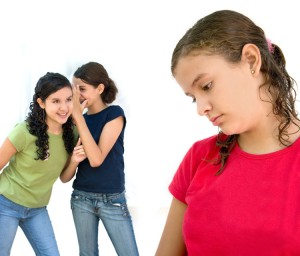 Bullying.
Bullying.
We hear about it everywhere. On the news. In the classroom. At youth clubs. On the streets. In the papers (what’s left of them anyway).
There are anti-bullying posters, campaigns, safe spaces, classes, courses, bracelets, shirts, petitions and much more.
But is it a real problem or a manufactured one? Are kids ‘just being kids’ or is there something more to it all?
The US government thinks it’s a problem – Stopbullying.gov has provided its first infographic on bullying in the US:
What is bullying?
Bullying is the ongoing targeting of another person with the intention of causing physical, mental or emotional harm.
The key word is ‘ongoing.’ It’s about someone being the target over and over again. Unfortunately, youth will say things that aren’t very nice and make fun of one another, but it’s when this goes on and on, hour after hour, day after day, week after week, that it’s considered bullying. It can happen at school, home, in the neighborhood, via text message or online. It can be name calling, threatening, blaming, ostracizing, ignoring, spreading rumors and much more.
For me, one of the big issues with ‘bullying’ today is that many of our young people seem to have a complete inability to be empathetic. It’s something that’s either taught or it’s not. You can’t just ‘hope’ that a child will learn empathy. It goes against our nature – which is generally self-focused – to think about how our words or actions might affect someone else.
Parents bullying?
And then, what do you do when it isn’t just youth who are bullying, but their parents as well. I worked at a program in the UK where there were one or two teens who were identified as ‘the problem‘. They were ‘the bullies.’
Except, when you stood outside the situation and considered all the angles, there was one boy in particular who was being targeted. Targeted for punishment, exclusion, blame and much more. The youth all identified this one boy as ‘the bully’ and yet from where I was standing, he was the target. He was being repeatedly excluded, ignored, identified as the troublemaker and was the reason many families considered removing their own youth from the program. What do you do then? Do you call the parents out as bullies?
I would say bullying is a problem, but not always in the way we identify or expect. Make sure that as you reflect on your practice, that in the process of rooting out troubling, exclusionary behavior, you’re not ostracizing any other youth in the process.
If you’re having a problem with bullying in your group, or could see one developing, you might consider trying some bridge-building activities.
Questions: Do you think bullying is real or a manufactured idea by the overly sensitive among us? What do you do to ensure that all the youth in your program are safe? How do you deal with parent bullies? We’d love to hear your thoughts in the comments below.
You can also connect with us by:
- Signing up to receive our posts via email
- Following us on Twitter
- Liking us on Facebook
- Signing up to our RSS feed
